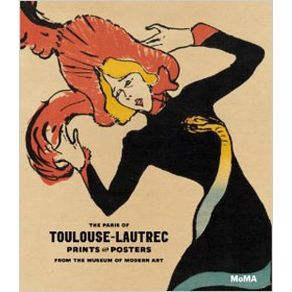Though he was deeply engaged with painting and drawing, Toulouse-Lautrec's lasting contribution to artistic practice was as a graphic artist. Through his prints and posters, he brought the language of the late-nineteenth-century French avant-garde to a broad public, through editioned prints, advertisements and contributions in reviews and magazines. He ushered in the first print boom of the modern era; taking advantage of lithography's new potential for color and scale, he made both posters for the streets of Paris and prints for the new bourgeois collector's living room. During his short career, he created more than 350 prints and 30 posters, as well as lithographed theater programs and covers for books and sheet music. The Museum of Modern Art's collection of this material is stellar, encompassing over 100 prints and posters, his most important book projects, and many magazines, journals and other examples of printed ephemera. A cultural nexus, Toulouse-Lautrec connected artists, performers, authors, intellectuals and society figures of his day, creating a bridge between the brothels and society salons of the Belle Epoque. His work allows entry into many facets of Parisian life of the period, from politics and economics to visual culture and the rise of popular entertainment in the form of cabarets and café-concerts. Featuring an overview essay by Sarah Suzuki, Associate Curator in the Department of Drawings and Prints at MoMA, this publication presents thematically organized groupings of Toulouse-Lautrec's prints from the Museum's collection, each accompanied by an illuminating essay on the theme. Inserted into the book is a 20" x 17" poster titled "Mademoiselle Eglantine's Troupe."
Henri de Toulouse-Lautrec (1864-1901) is best known for his portrayals of late-nineteenth-century Parisian life, particularly working-class, cabaret, circus, nightclub and brothel scenes. He was admired then as he is today for his unsentimental evocations of personalities and social mores. His greatest contemporary impact was his series of 30 posters (1891-1901), which transformed the aesthetics of poster art.



